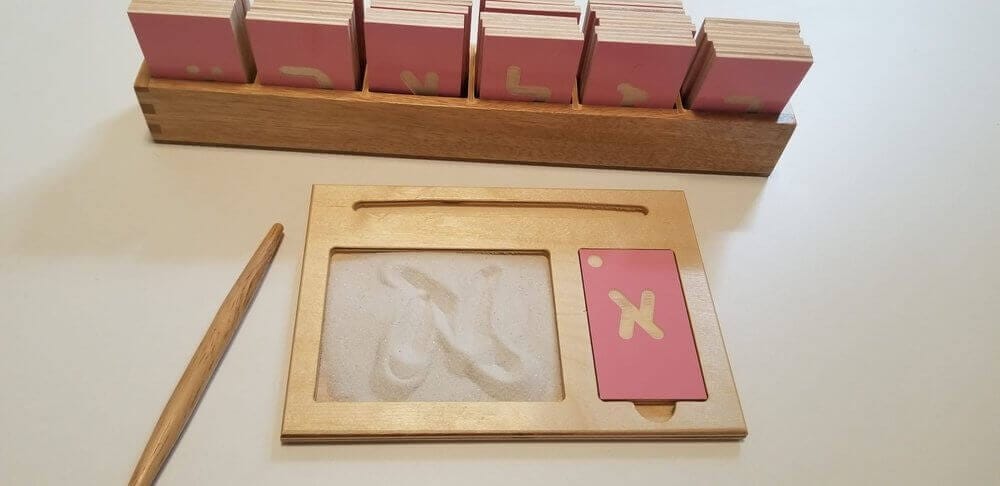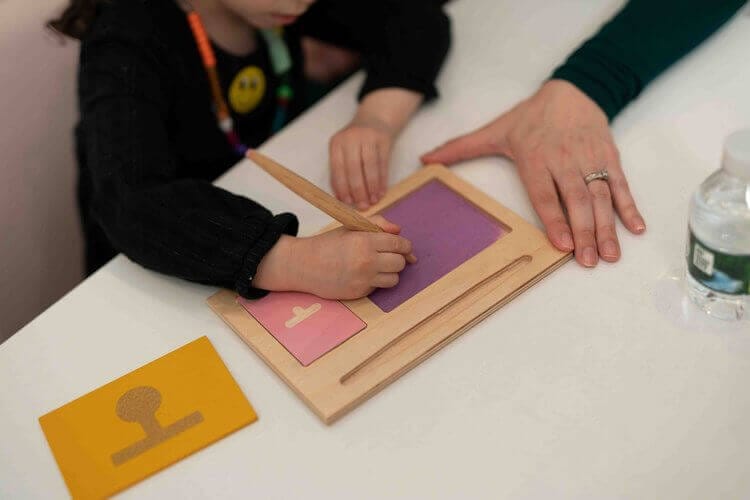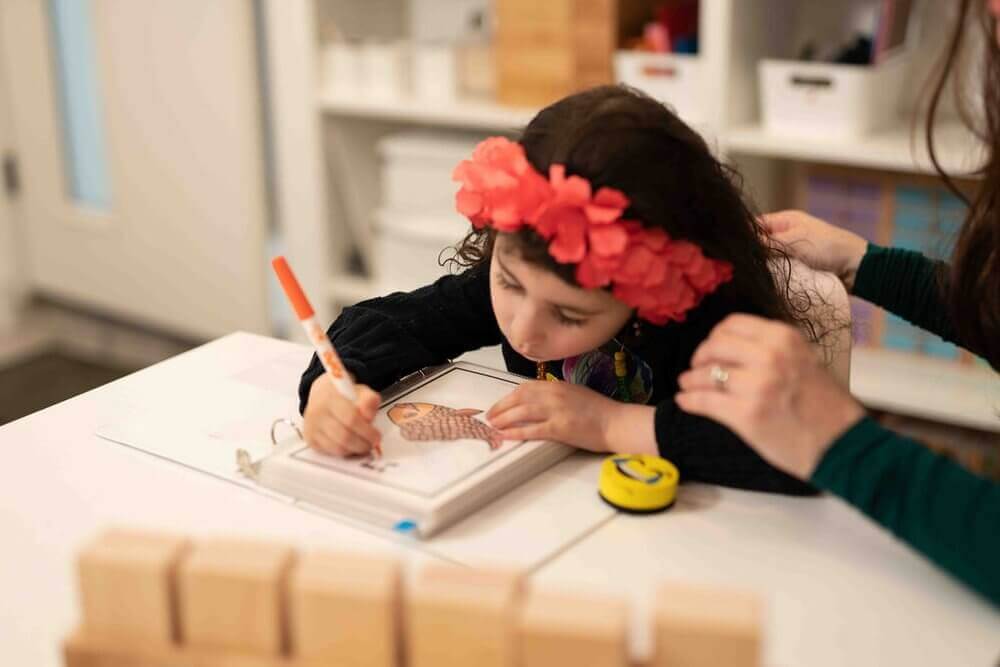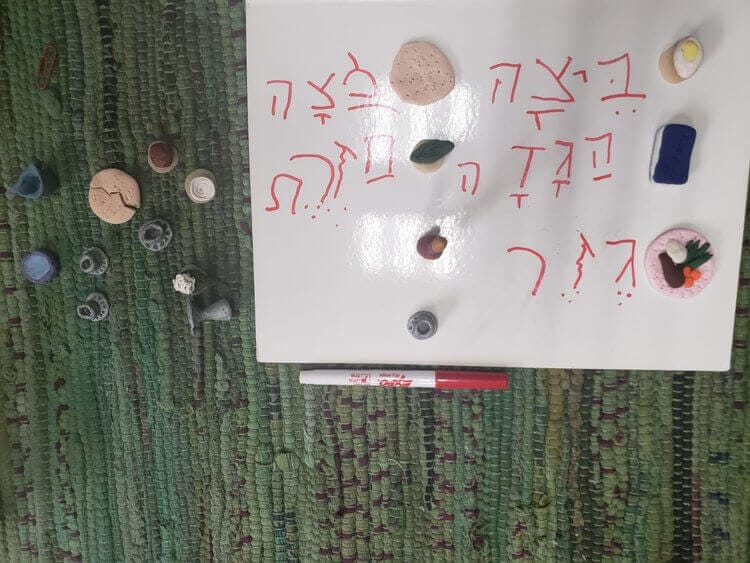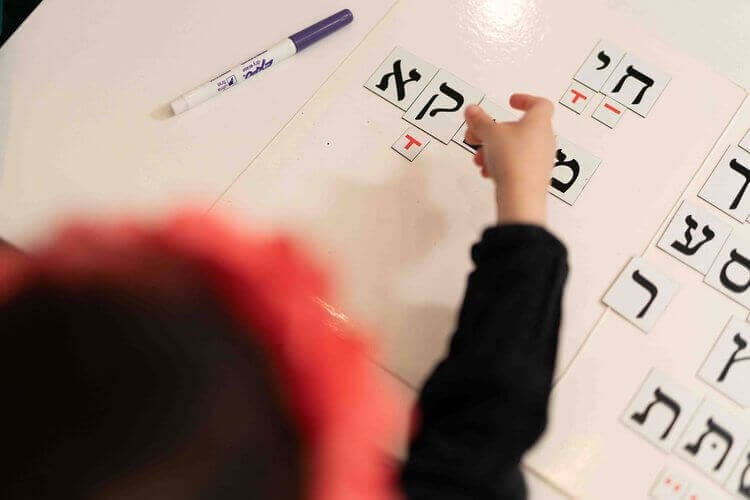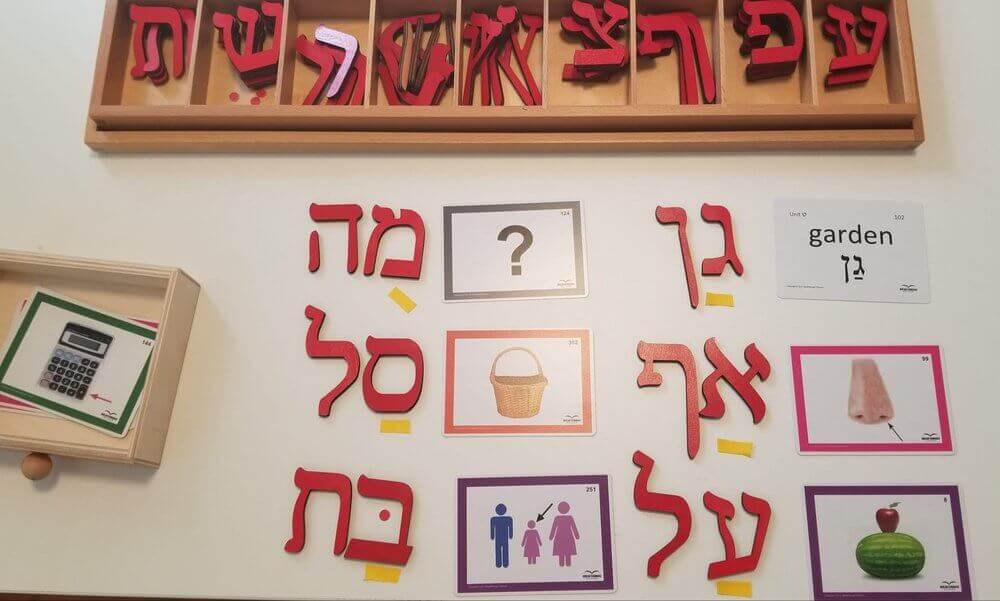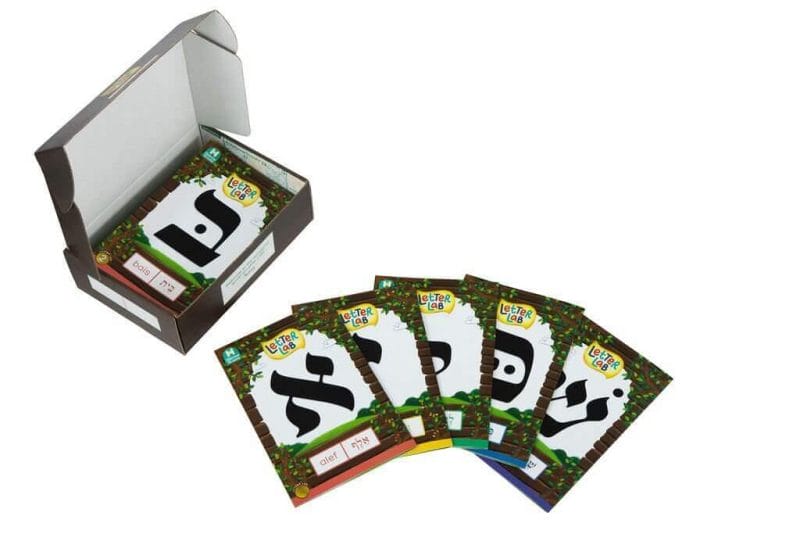Why is Handwriting Important?
Handwriting is a small-motor exercise that actually helps children build a stronger memory of the letter symbols.

There are so many resources and materials available that engage children in letter formation activities, but there are specific types that actually help develop practical skills. When choosing classroom activities, I suggest focusing on those that target the key handwriting motions that build on each other to give your children a stronger writing foundation. I’ve included some of my favorite materials and activities below as parallel exercises you can incorporate into your lessons.
Handwriting Readiness
Determining if a student is ready to begin learning to handwrite is sometimes tricky. We’ll make it easy to break down. If a child is displaying most of the following behaviors, it is a good indicator that they are ready to jump into handwriting instruction.
Block Letters vs. Script
In teaching children to write in Hebrew, we specifically choose to teach block letters (as opposed to script) for a few reasons. It can be overwhelming for many children to learn an additional set of symbols when they are still working to recognize the first. We prioritize the block letters as they are the most similar to the Siddur font that they will need for reading. Once children become fluent in block letters, we can introduce script, but first want to ensure that they receive a strong foundation. We want children to be able to start reading as soon as possible, and learning to write the letters they will be actively seeing, learning, and using is a great way to accomplish this. Writing block letters specifically is an excellent means of helping them make strong memories of the letters they are going to need more often. If some educators find that their children are able to learn both letter types, you can use these methods for script too.
How to Teach Handwriting
Teaching handwriting is strongly based on a gradual release of responsibility, where we give children all of the support and then gradually release support in order to build skills. Here are some of my favorite handwriting activities that give children size, visual, and tactile support, which are super effective in developing handwriting skills:
(NOTE: These handwriting activities will help children be prepared for the writing pages in our Letter Lab Worklet, where they are tasked with writing the Hebrew letters with only visual prompting)
1. Sky Writing
Handwriting is a small motor exercise, which engages the small muscles. Small muscles hold small (or short-term) memory while large muscles hold large (or long-term) memory. When children do something with their small hands, they can forget it, as it is harder to engrain in their long-term memory. A great way to get children to store their memory of the letter shapes in their long-term memory is to engage their large muscles by having them draw large-scale letters. Skywriting is a popular strategy, where children close their eyes and pretend to write the letters in the air, moving their shoulders to make large movements and engage their large muscles. Children can imagine they are drawing letter clouds, stars, rainbows, or anything else they can dream of.
2. Chalkboard Writing
 Similarly, using a large chalkboard (or whiteboard or sandboard), children can draw out large-scale letters, letting them erase and redraw again and again to build up a strong memory of the letters.
Similarly, using a large chalkboard (or whiteboard or sandboard), children can draw out large-scale letters, letting them erase and redraw again and again to build up a strong memory of the letters.
3. Sidewalk Letters
A fun twist on this concept of size support that involves more movement and engagement is to give children paintbrushes and water, letting them “paint” big letters outside on the ground. This can also be done with sidewalk chalk, paint, etc.
4. Motor Boards
This Montessori-style activity is a great way to provide strong motor support and have children engage with the letters in a way that actually builds up handwriting skills, such as writing small letters on paper. Using a stylus or stick to draw letters is amazing for learning proper grip on a writing utensil. This activity relies on visual supports of letter cards so the children can look at the letter and then draw it. Other types of motor boards have letters inset in the wood that help guide the child’s fingers to trace the letters.
5. Sand Writing
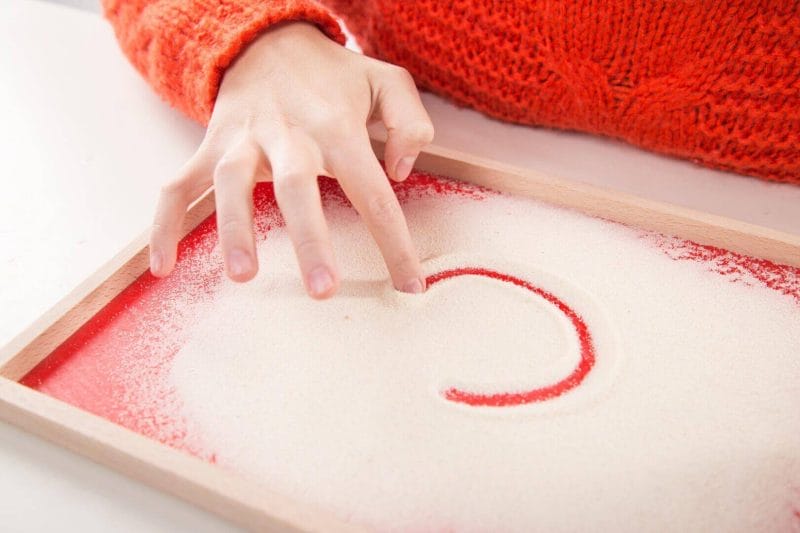
Sandboards are also super engaging and allow children to have fun drawing and redrawing the letters in the sand. This activity can be done by copying a visual cue and eventually building up to writing without any visual support.
6. Sandpaper Letters

This activity uses a visual cue that is then followed with tactile input. Give children letter cards that show how to write the letters then have them trace over the sandpaper letters for tactile support that helps build their letter knowledge.
Alternate means for Handwriting
If children are ready to experiment with word building and emergent writing, yet they do not have the motor still to support their literacy exploration, using alternate means to handwriting can be a great idea until their motor skills are ready.
Having children write letters on whiteboards with visual supports helps build up to writing on a smaller scale. By using an erasable surface, writing practice is made fun with the ability to erase over and over again. Writing mistakes aren’t permanent so there is less stress and more ability for repeated practice. If you want to make your own version, simply create a handwriting page and laminate it to make it erasable.
Moveable Alphabet & Magnetic Word Builders
This classic Montessori activity has multiple means of expression but is especially great for younger children/those who are ready to explore literacy but lack small motor skills. Even before children are ready to start spelling with the movable alphabet, they can hold the letters and internalize their shapes, introducing them to the concept of print concepts. It can be used in varying degrees of complexity, from sorting and ordering the alphabet to building words and sentences, so is great for all levels.
These letter stampers can be a great means for children to experience the writing process before they have the motor skills to form letters with writing utensils.

I love these handwriting activities because they truly are so effective! They work on gradually decreasing tactile support, visual support, and font size until children acquire handwriting skills that are ready to be used on pencil and paper.
Keep in mind that many activities geared towards English instruction can be modified and adapted for Hebrew instruction as well, so take a deep dive on Pinterest for extra inspiration! Once you understand how children build these writing skills, you can explore and find tons of activities and know when/how to integrate them sequentially and logically into your teaching.
Handwriting Sheets
Finally, after all of these wonderful handwriting exercises that support the learners in a tactile and visual way, they may be ready for handwriting sheets. Handwriting sheets should provide step by step instructions and gradually decrease the support to the students and expect the children to write smaller and smaller letters. Our Letter Lab worklets accomplish just that!
More Handwriting Tips:
Environment & Equipment
Teachers should pay attention to the environment in which the students are learning to maximize effective learning. Attention to detail will help reduce stressful body positions and allow for free movements of the writing arm, wrist, and fingers for the proper grip of the writing utensil and the fluid formation of letters.
Furniture
The student should have a flat, stable surface to write on, at a comfortable height that allows for their knees to fit comfortably under the desk or table and for their feet to lie flat on the floor. The chair should be placed so the student faces the desk squarely. The desk for a left-handed student should be about two inches lower than for a right-handed student to help them see what they are writing.
Posture
Good posture is important for proper handwriting technique and legibility.
The student should sit up straight, with their feet flat on the floor and their shoulders relaxed, leaning slightly forward, but not touching the desk. The student’s arm should be at a comfortable angle when writing, with the elbow bent at a right angle and the forearm parallel to the ground. It is important for the student to be comfortable in their seated position, as this can help them focus and concentrate on their handwriting.
Context
When learners practice handwriting in context of vocabulary, it can help the remember the letters well. This is because they are using the letters in a meaningful way.


